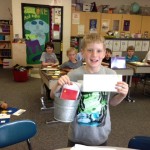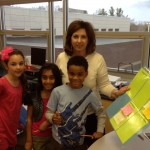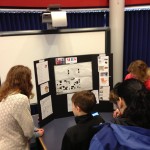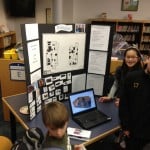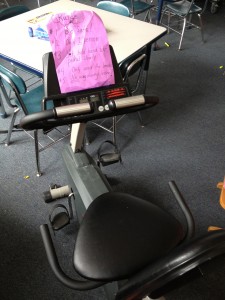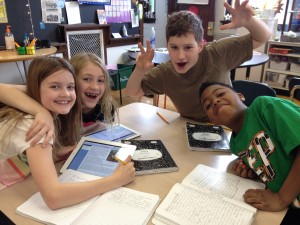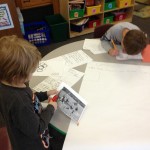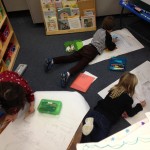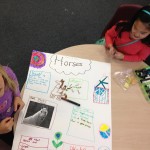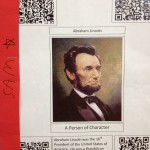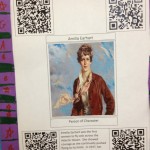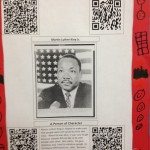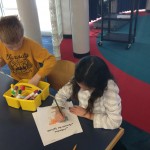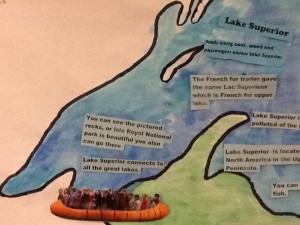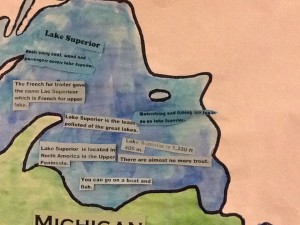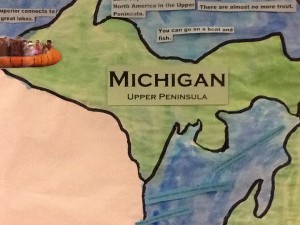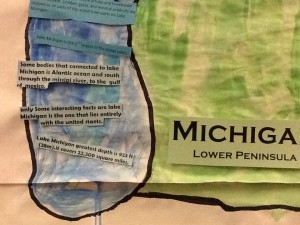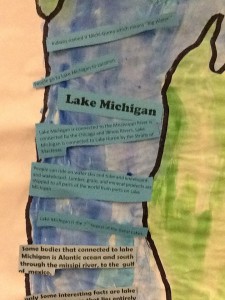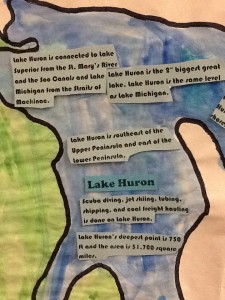Project Based Learning: Some Great Things Happening At Harlan!
Project Based Learning (PBL) is an effective instructional strategy for capturing students’ imaginations and helping them become truly involved in their own learning. I’m particularly excited about the level of student engagement and ownership that can be generated when students are involved in relevant and meaningful projects. Documenting students in action reminds me just how effective well-implemented PBL can be. There are many wonderful examples of how teachers at Harlan Elementary are using this strategy in their classrooms. A few are showcased below.
Ten lessons I’ve learned about PBL from the incredible experts at Harlan:
1) Student choice helps generate interest, excitement, and engagement.
2) Scaffolding projects with effective instruction in scientific exploration and research is key to student success.
3) Modeling, support, and guidance during the research process helps students stay on track and allows for a smooth release of responsibility within any given year and across grade levels.
4) Partnerships enhance instruction. Ask your media specialist how he/she can help kids learn about key word searching and using databases.
5) Stretching across the curriculum can make for rich projects and the development of connected skills.
6) Finding ways to help students figure out how their projects can be relevant and impactful in and outside of makes learning real.
7) Enlist other teachers, administrators, and parents to provide an authentic audience for your students.
8) Capping off a project with a fun, social, showcase event can help motivate your group to focus on quality.
9) Celebrate the progress and outcomes. Highlighting parts of the process as important landmarks can help students understand the their value.
10) Authentic enthusiasm is contagious. When teachers are excited and involved, student learning is enhanced!
A Few Examples:
Karen Abels introduced a Michigan project by allowing her 3rd graders to choose their course of study. Incorporating student choice helped generate interest and excitement. Mrs. Abels gave her students some suggestions as to what might be important to study about their great state, she supported them in researching the topics, and she guided them in a collaborative effort to narrow those topics down. After some initial learning (both of content and research skills) the group chose to move forward with “invasive species” as their focus. It’s important to point out that Mrs. Abels enlisted the help of Mrs. Stayer, the incredible Harlan Media Specialist, to co-teach throughout the project. Critical partnerships can be extremely effective!
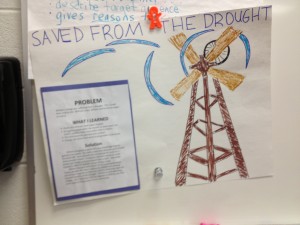
Candi Gorski put together an incredible cross curricular project for her 1st graders that got them thinking about ways in which they can be impactful in their community. Mrs. Gorski read an amazing true story about a boy in Africa who designed and built a windmill to help his village generate much needed energy, eventually leading to cleaner water and other key resources that improved lives and inspired others with hope. After sharing the story she facilitated critical processing, helping her students make connections to their own lives. The students were charged with designing contraptions that could help keep people stay safe during in extreme weather conditions. These 1st graders were given a license to be creative in exploring the finer points of their science study while considering social studies concepts and using important reading and writing skills. Mrs. Gorski did an incredible joy implementing this cross-curricular model of learning. They were invited to be innovative and suspend disbelief, effectively giving them the sense that they are able to make a difference through research, understanding, creativity, and action.
Karen Hasler engaged her 5th graders in a design project that had them working with faculty members as architectural clients. The students used their math skills along with drafting technology to design homes for their clients. Mrs. Hasler organized a design expo to culminate the project, effectively extending an authentic audience for her group. Parent and teachers gathered in the media center to see the designs and speak with young architects. I was amazed with the enthusiasm that the students presented their work with. Not only were they proud of the outcomes, they were also excited to go into detail about the process. Students, dressed to the nines, stood by their finished designs posing for pictures and pictures and answering questions.
Each of the above projects is similar in that the students involved were actively engaged and excited about the work they were doing. From 1st graders to 5th graders, they were collaborating with one another, being creative, thinking critically about their work, and being concerned about the outcomes that they were working toward. There are many other incredible PBL efforts happening at Harlan and around the district. Whether you’re working to plan for the final month of this year or preparing for the fall, get in touch with a colleague who you know has an interest in PBL, put your heads together, and make some plans. Let me know if I can help!
